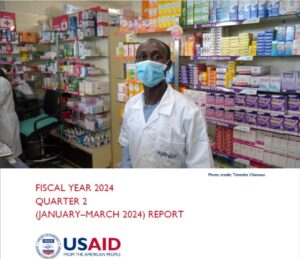Point Prevalence Survey of Antibiotic Use across 13 Hospitals in Uganda
Standardized monitoring of antibiotic use underpins the effective implementation of antimicrobial stewardship interventions in combatting antimicrobial resistance (AMR). To date, few studies have assessed antibiotic use in hospitals in Uganda to identify gaps that require intervention. This study applied the World Health Organization’s standardized point prevalence survey methodology to assess antibiotic use in 13 public and private not-for-profit hospitals across the country. Data for 1077 patients and 1387 prescriptions were collected between December 2020 and April 2021 and analyzed to understand the characteristics of antibiotic use and the prevalence of the types of antibiotics to assess compliance with Uganda Clinical Guidelines; and classify antibiotics according to the WHO Access, Watch, and Reserve classification. This study found that 74% of patients were on one or more antibiotics. Compliance with Uganda Clinical Guidelines was low (30%); Watch-classified antibiotics were used to a high degree (44% of prescriptions), mainly driven by the wide use of ceftriaxone, which was the most frequently used antibiotic (37% of prescriptions). The results of this study identify key areas for the improvement of antimicrobial stewardship in Uganda and are important benchmarks for future evaluations.
Point Prevalence Survey of Antibiotic Use across 13 Hospitals in Uganda
By Reuben Kiggundu, Rachel Wittenauer, JP Waswa, Hilma N. Nakambale, Freddy Eric Kitutu, Marion Murungi, Neville Okuna, Seru Morries, Lynn Lieberman Lawry, Mohan P. Joshi, Andy Stergachis, and Niranjan Konduri
